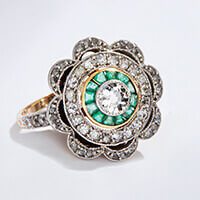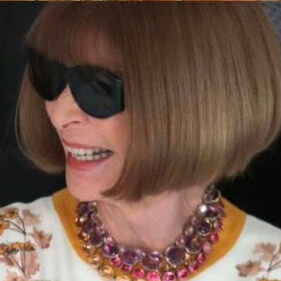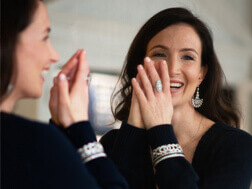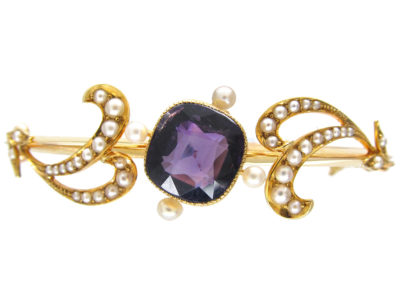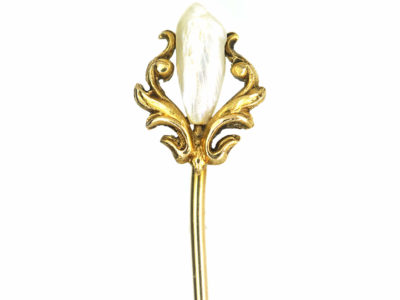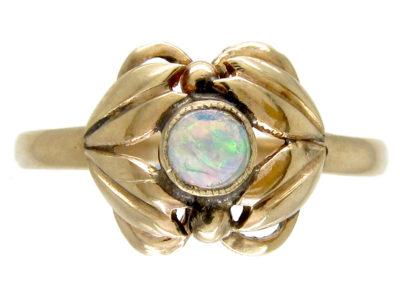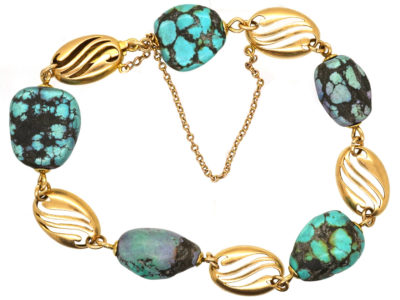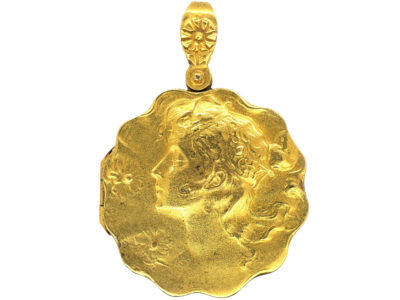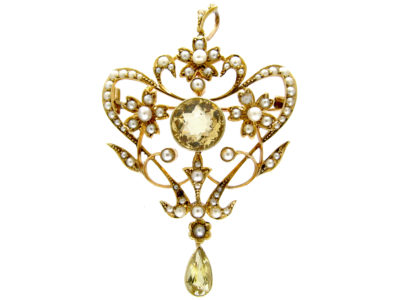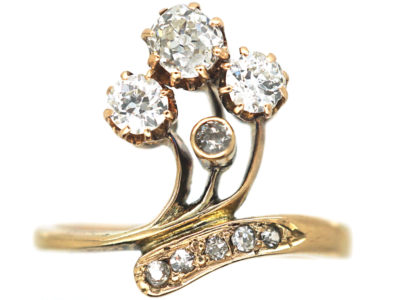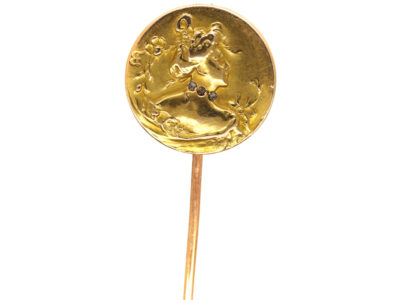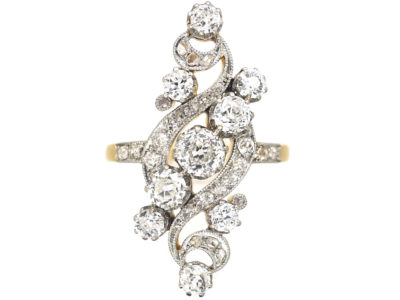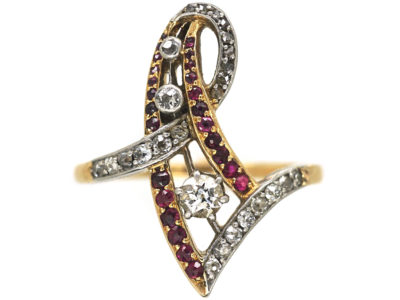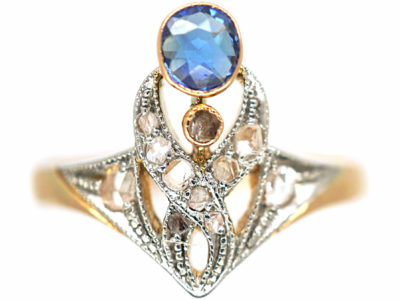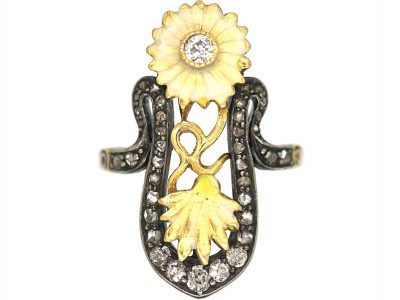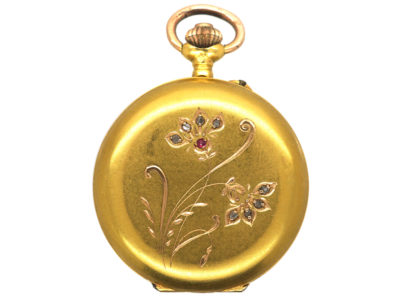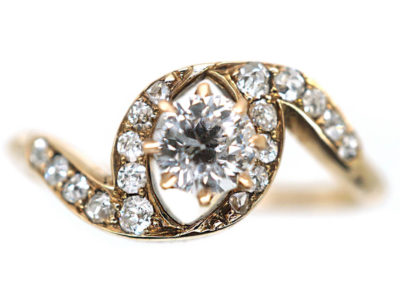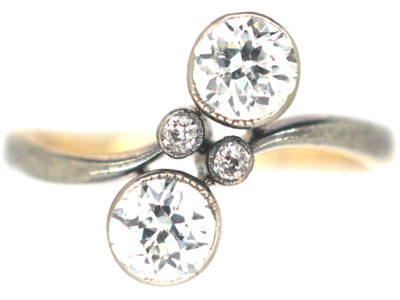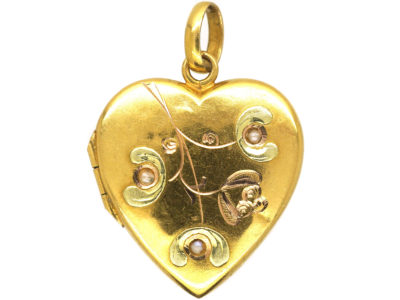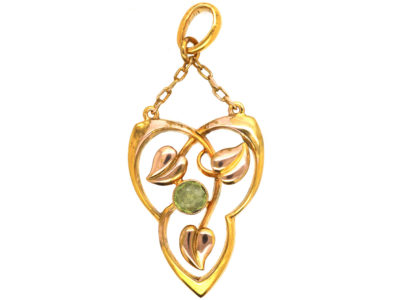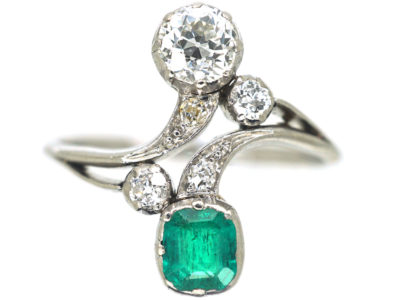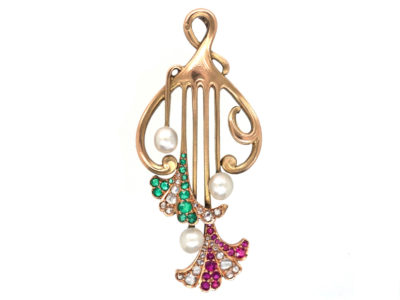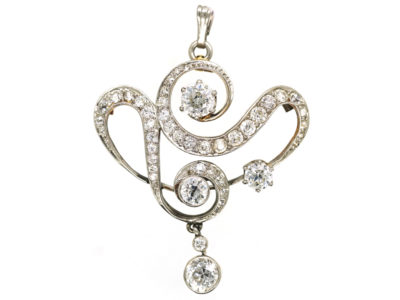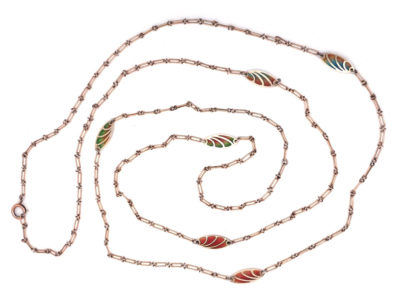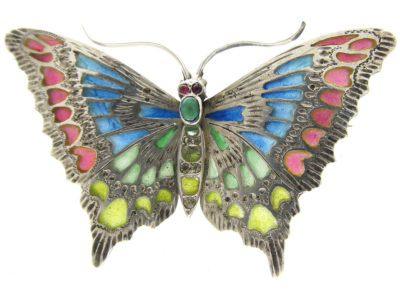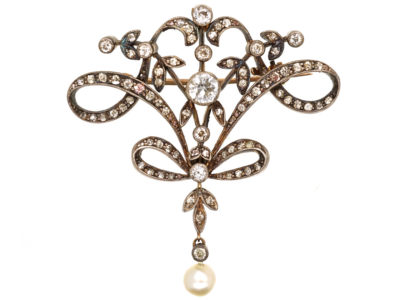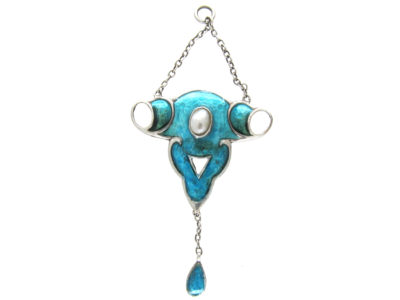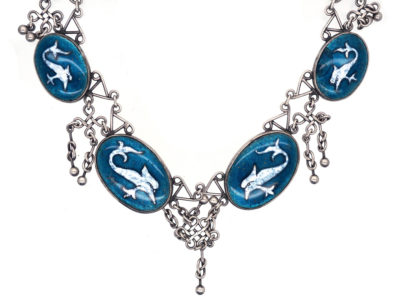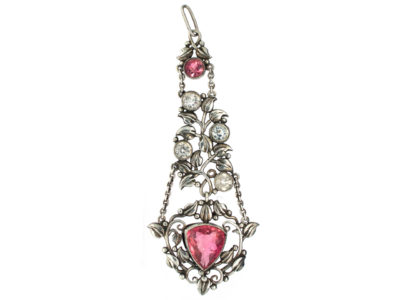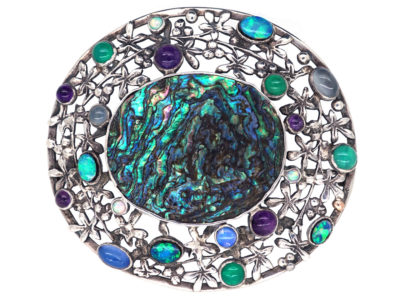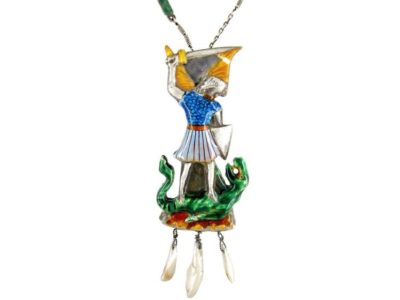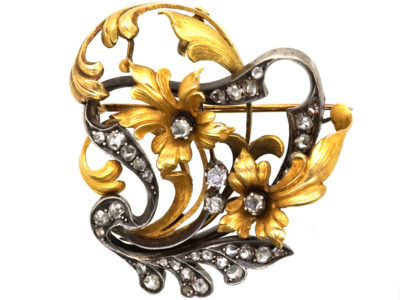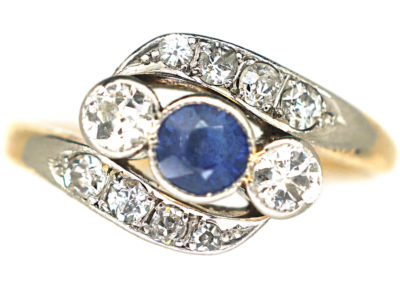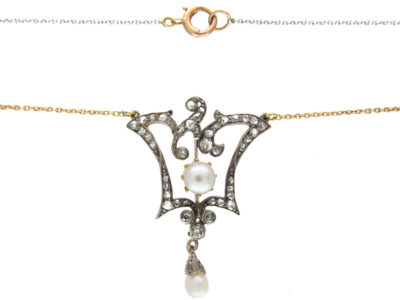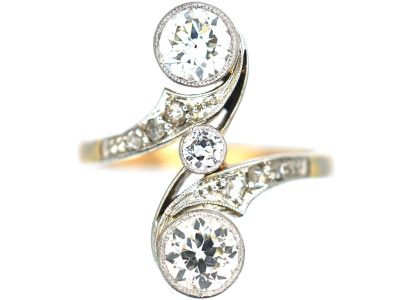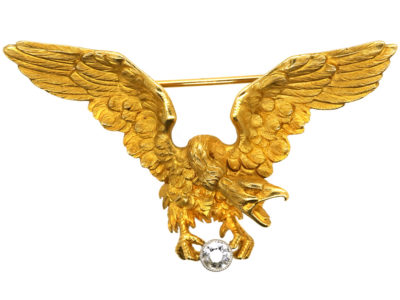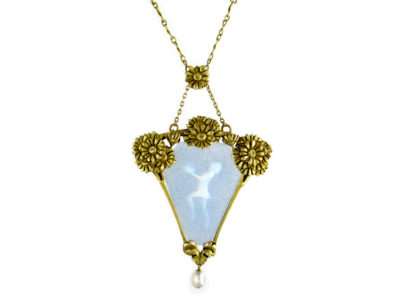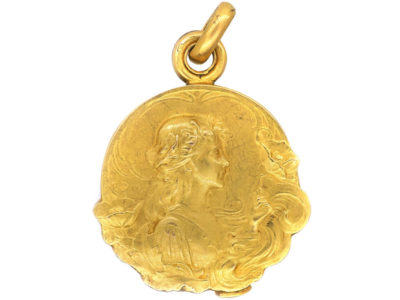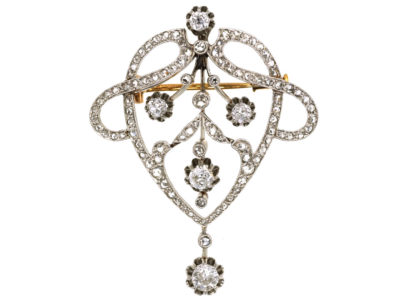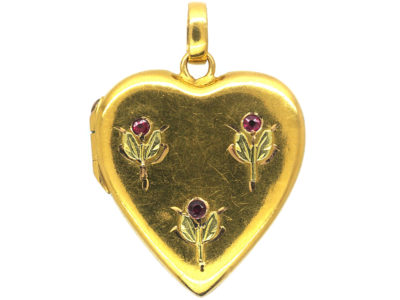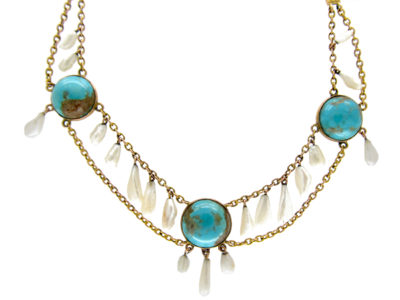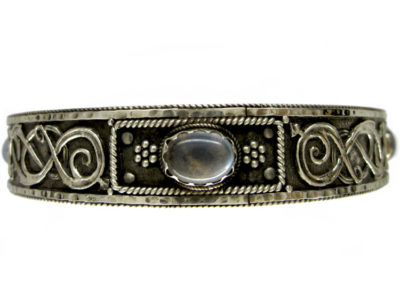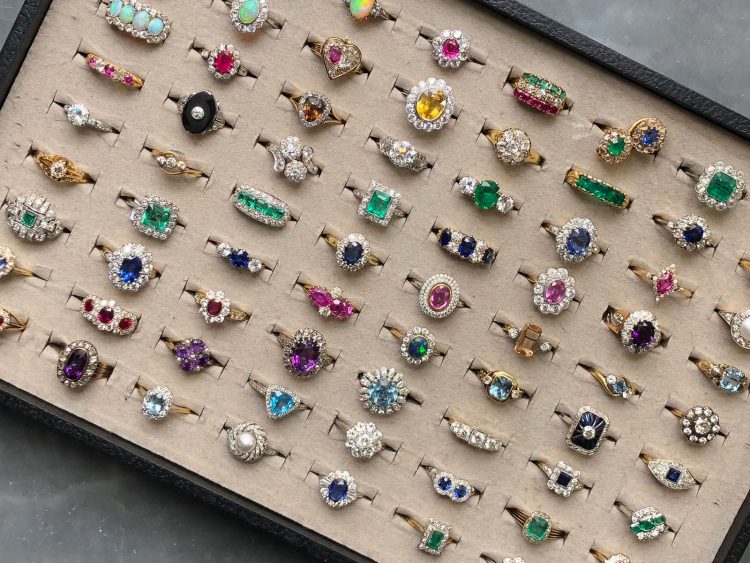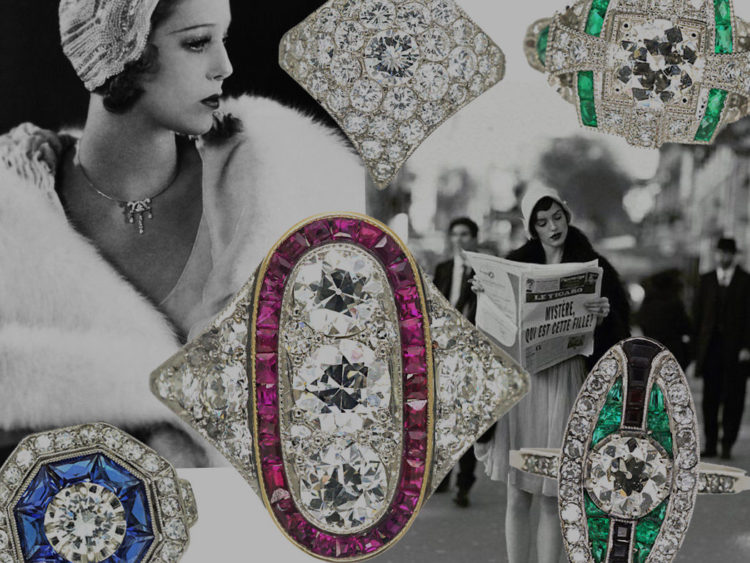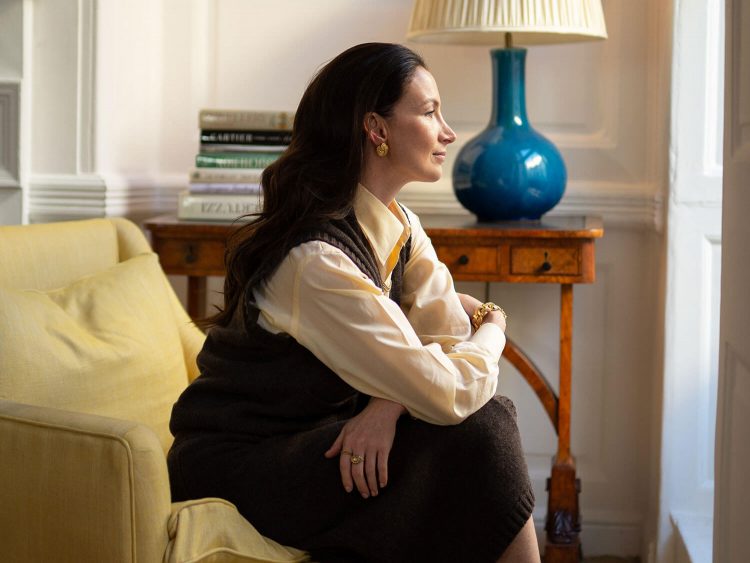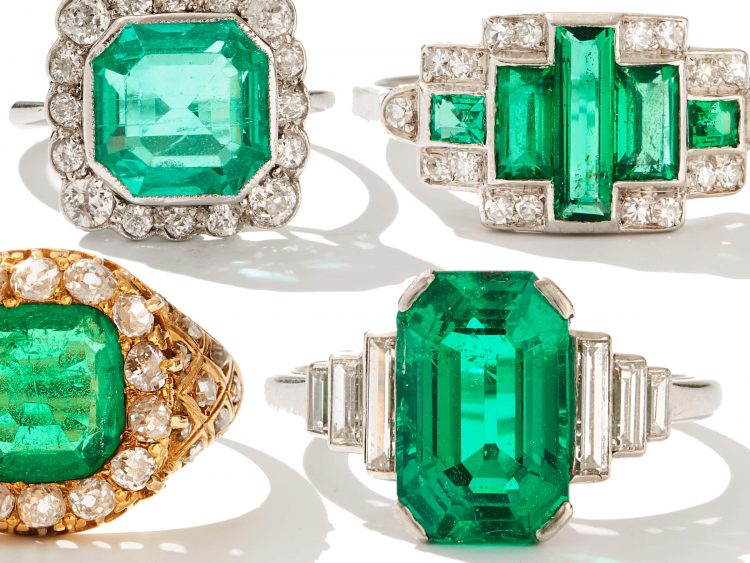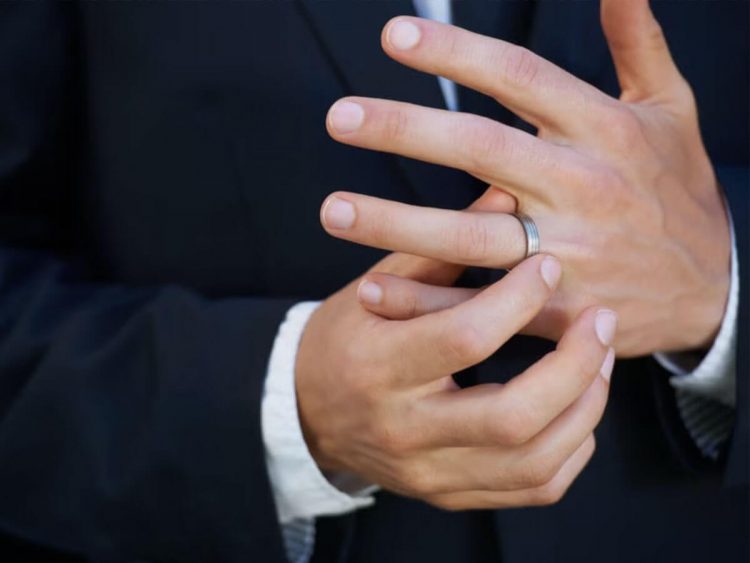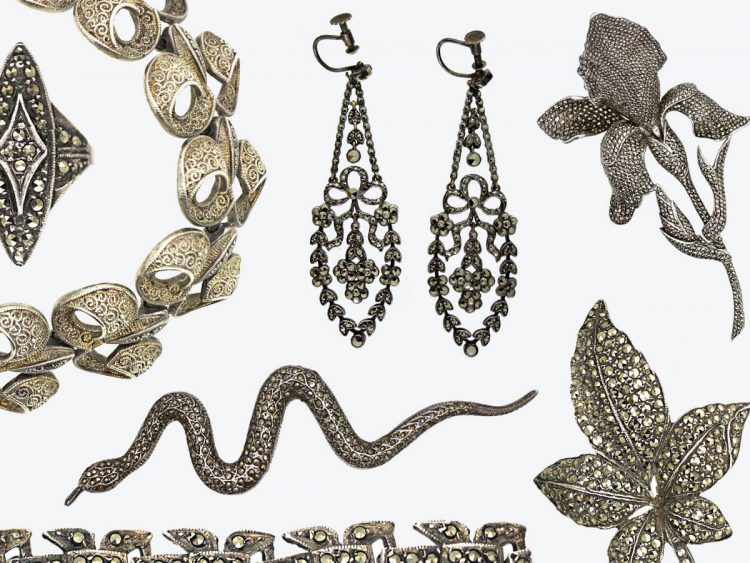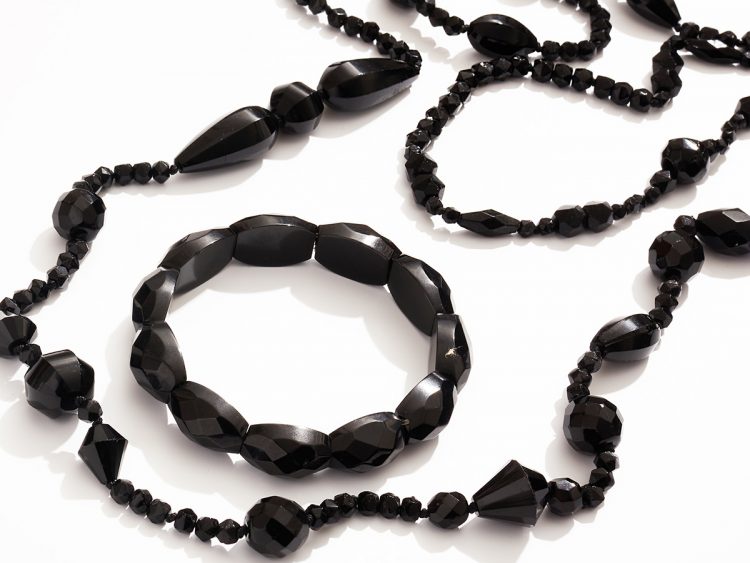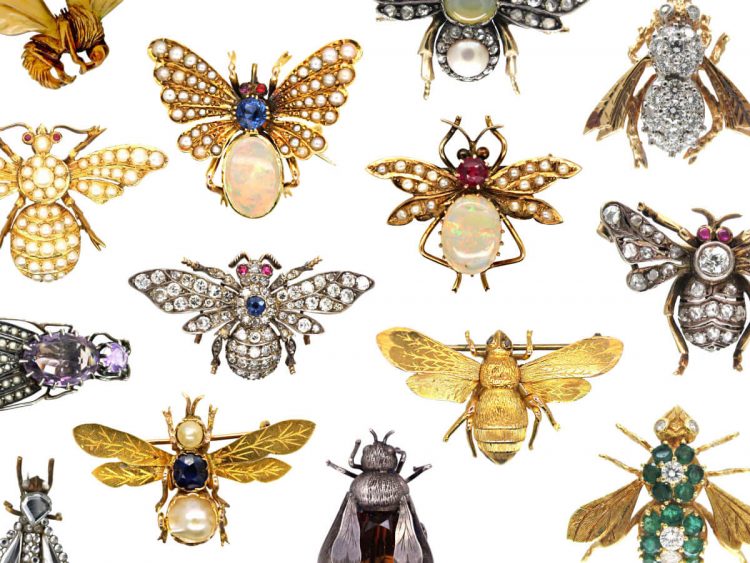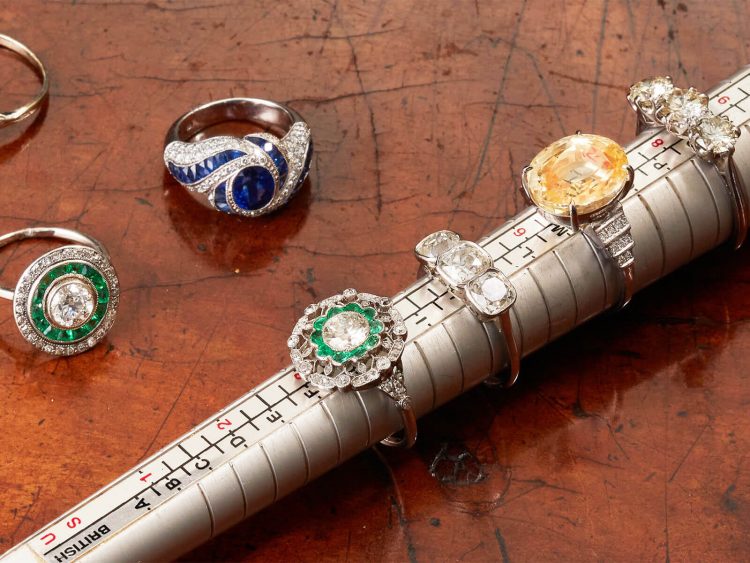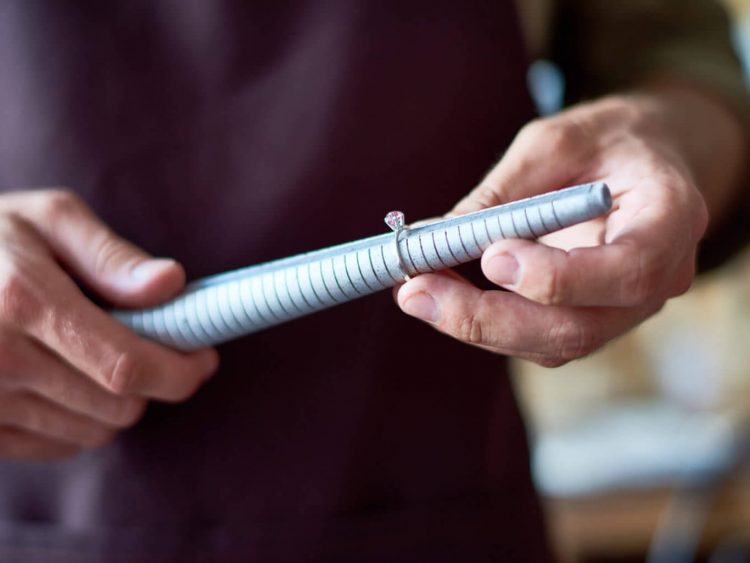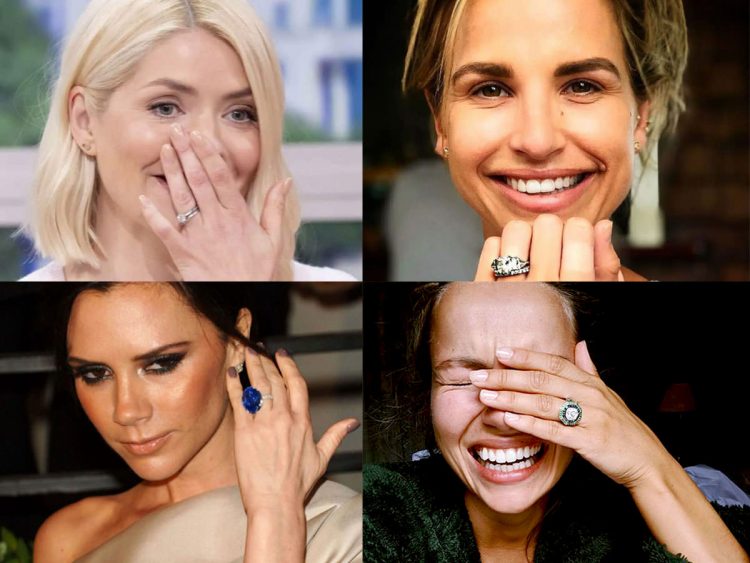-

Your Shopping Bag is empty
Art Nouveau Jewellery: A Guide
In 1858 the trade routes with the East were reopened. The Japanese artists with their simple, elegant interpretations of nature – known as Japonisme – had a huge influence on artists looking to break free from the machine-made, fussy design of the Victorian era. Jewellers were inspired by the simplicity of form, close bond with nature and intense use of colour in Japanese design.
A Style Revolution
An art dealer called Samuel Bing gave his Asian art gallery a new name – ‘Art Nouveau‘ – in response to this new artistic mood and held an international exhibition in 1895 to re-open it, inviting influential artists from around the world. Thus, the brief but significant Art Nouveau movement was crystallised.

Themes & Motifs
A key element of the Art Nouveau style, which extended across all artistic mediums, was the free-flowing line (also known as the ‘whiplash’ line). These fluid lines mimic the movement and natural curves of nature, from ocean waves to flowers to the naked human form.
There are many recurring themes and motifs in Art Nouveau jewellery. Insects such as dragonflies, butterflies, beetles, grasshoppers and spiders were widely depicted. Snakes remained an important symbol, newly sensual and colourful after the coiled golden snakes of the Victorian era. Colourful reptiles as well as birds with their magnificent plumage were depicted sensually and playfully. Bats, owls and grotesque mythological creatures formed the darker side of Art Nouveau design. Miniature landscapes were often portrayed.
Largely rejected by the Victorians, the ‘cult of the female figure’ was prevalent in the Art Nouveau era, in all its soft, feminine, naked curves.
Techniques & Materials
Jewellers used revolutionary techniques and materials to achieve the fluid aesthetic of the era. Metals were coaxed into soft curves, shimmering opal and moonstone were popular, horn, bone and ivory were carved and sculpted into flowing lines and images.
Enamel was critical to bring designs to life and add colour – an important element of Art Nouveau design. Plique-à-jour enamelling created translucent interpretations of insect wings and plants and brought the creatures and flora to life. Champlevé enamel and Pâte de Verre added a 3D depth to jewellery.
The Artists
Jewellery from the Art Nouveau period is prized for its originality and workmanship over the intrinsic value of its materials. It is robust, solidly built with the wearer in mind. There were several great Art Nouveau jewellery artists, including Georges Fouquet, Henri Vever, Eugène Feuillâtre, Léopold Gautrait, and Lucien Gaillard. René Lalique, however, was the most influential and well known of the Art Nouveau designers. He was trained as a jeweller but worked across the arts. His enamel work eventually led him to fall in love with glass, which became his life’s work. His trademark motif – which was copied widely – was the naked female figure.
The Art Nouveau movement coincided in part with the Edwardian era, with its light, delicate and pretty diamond and platinum designs. Some of the big household names – Cartier and Boucheron, for example – successfully incorporated techniques and styles from both movements to create blended styles.
Short But Sweet
After the war, people became open to modern developments. Cleaner, straighter lines came into fashion across architecture, clothing and art and the flowing lines of the Art Nouveau movement became outdated, paving way for the Art Deco era.



 Free Worldwide Delivery
Free Worldwide Delivery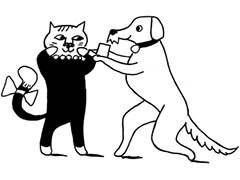 View All
View All
 Diamond
Diamond
 Sapphire
Sapphire
 Emerald
Emerald
 Ruby
Ruby
